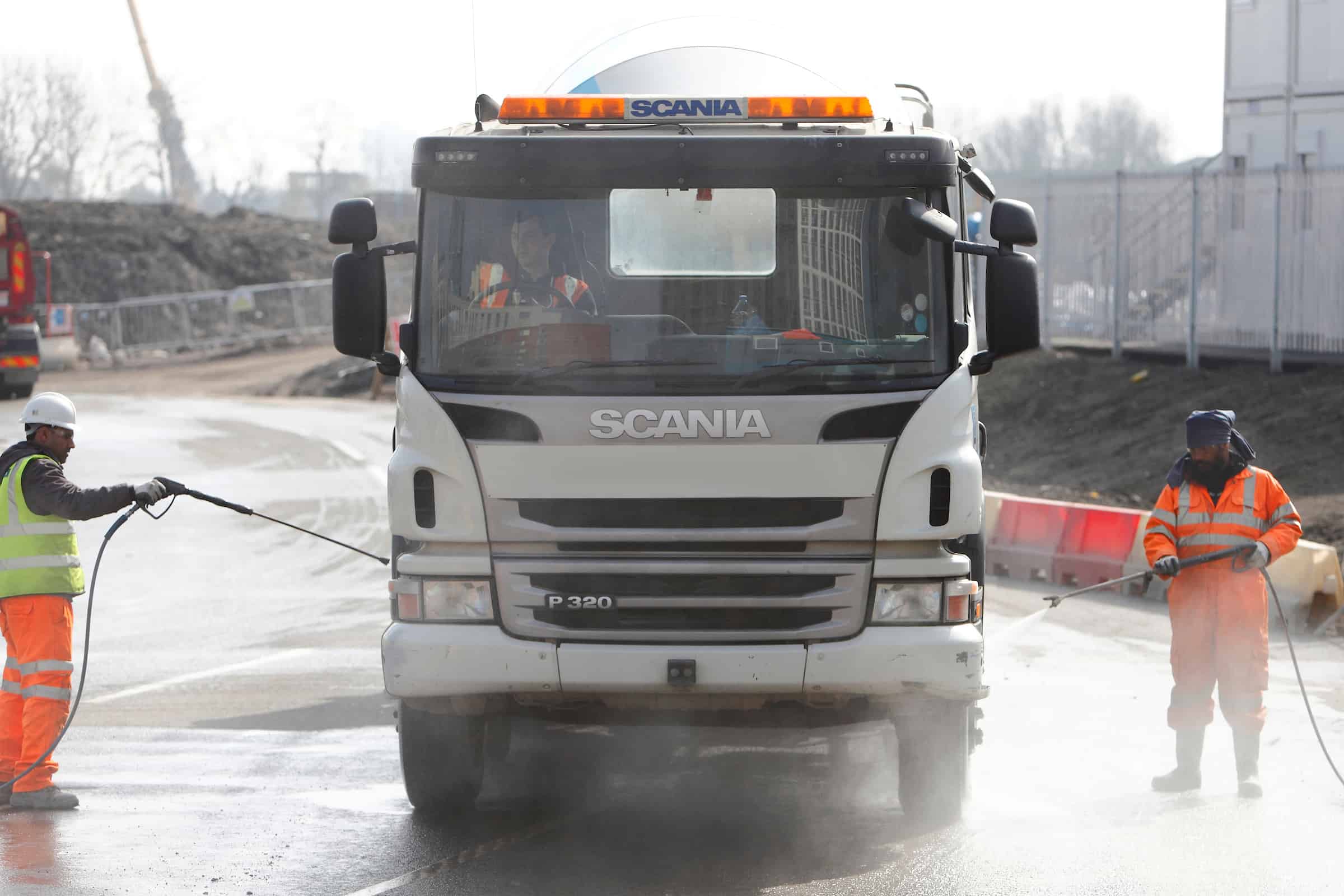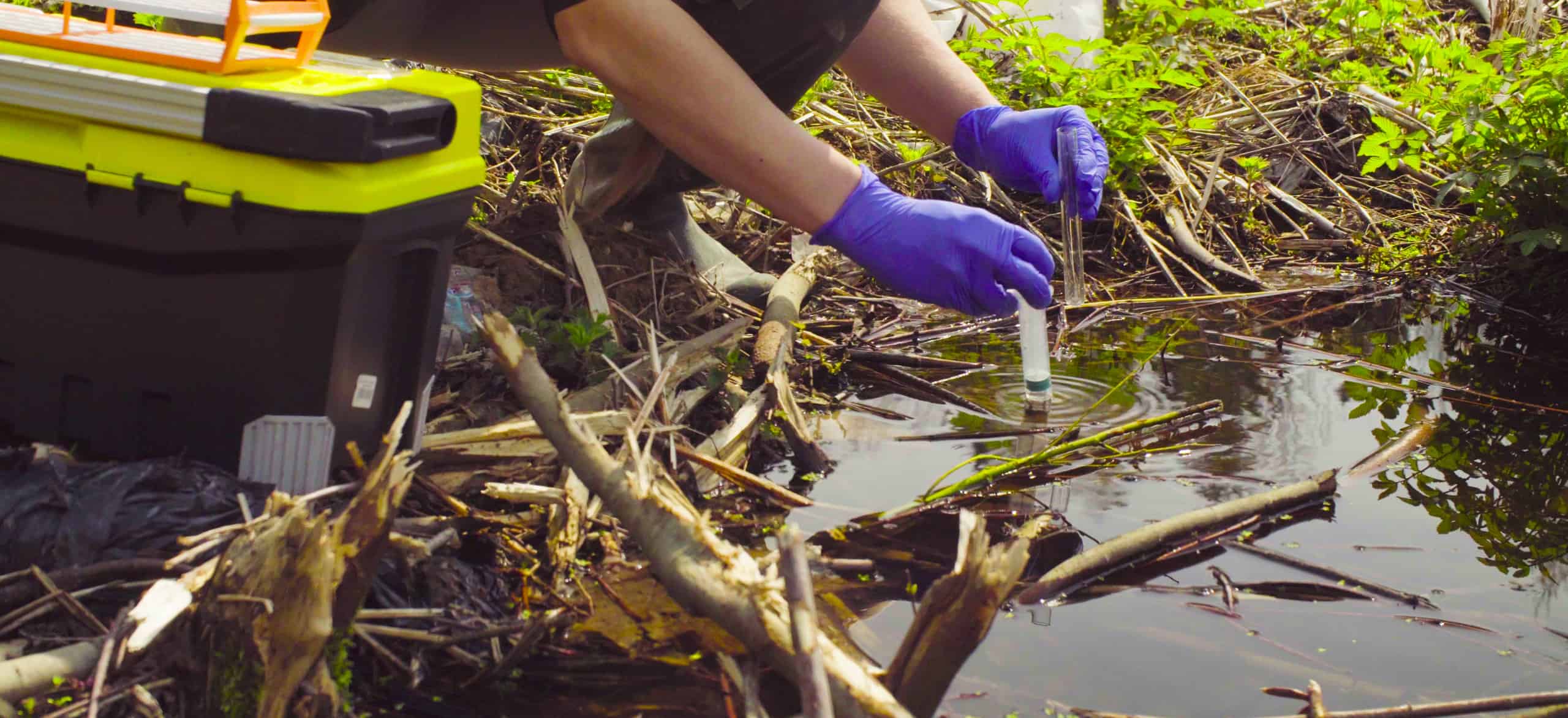Construction & Demolition
Construction & Demolition
There are three key water pollutants associated with sites where excavation, tunneling and demolition is required. These pollutants are:
Silt and suspended solids
Alkaline pH from cement
Fuel & oils, chemicals
key water pollutants 1
Silt and suspended solids
“Silt pollution is highly visible, easy to trace back to its origin, travels a long way and causes significant environmental harm.”
Excavation and the movement of large vehicles over bare soil can release turbid, cloudy, silt-laden water into water courses following rainfall.
This should be of particular concern for construction companies, as they are a common source of silty and concrete wash water, with many companies being taken to court for this very reason and receiving large fines.
Silty water is the suspension of soil particles within a body of water, which vary in size creating mediums such as Clay, Silt Sand and Fine Gravel, giving a cloudy or turbid appearance. In low flow, or still conditions, medium and large sized particles will settle at the bottom of the waterbed, whereas small, fine particles remain in suspension for long periods of time and are able to travel long distances.
Environmental harm can also be caused by silty water run-off from brownfield or industrial sites, suffocating fish by blocking their gills, stripping out dissolved oxygen, preventing sunlight penetration, binding off gravel beds and combining with other contaminants to travel further.
Silt pollution is often overlooked, but the release of even small quantities of sediment into a waterway can have dire consequences for the health and biodiversity of the water course.
Technical Solutions
Lamella Clarifiers – simple & effective, robust, no power required, easily transported, small footprint. Can treat volumes of up to 300m/hr3.
Chemical Dosing – use of dosing systems to introduce coagulants, flocculants and pH regulators. Effective and reliable, often used in conjunction with other technologies, but requires power and knowledge regarding the correct use of chemicals.
key water pollutants 2
Cement, concrete,
hydro demolition – Alkaline pH
Man-made pollution can change the pH in water courses to a value that is outside its natural range of 6 and 9.
Concrete wash water from construction sites and factories changes the pH level of a water course as it contains extremely high levels of alkaline, damaging vegetation, disrupting eco-systems, killing fish and other species.
Metal rich acidic waters discharged from mines and factory operations, in addition to the detrimental effects of low pH, can also contain a variety of toxic metals, increasing the hazards associated with their formation.
A variety of industrial trade effluents that have high alkaline pH, are frequently associated with lime or caustic soda.
Low pH
pH5.0 - non-desirable species of plankton and mosses may become dominant and certain fish may disappear.
pH 4.5 - toxic metals such as Aluminium may become soluble, causing all fish to suffocate.
pH 3.0 - with the exception of a limited number of specialist organisms, the water will be devoid of life.
High pH
pH 9.6 - the gills, eyes and skin of fish may be attacked, reducing their protective abilities, causing stress, the inability to dispose of their metabolic wastes and ultimately, death.
pH 11+ - water will be devoid of life.
Technical Solutions
Concrete Washout Units – available in a variety of sizes depending on the capacity required, this technology uses CO2 to neutralise the alkaline effluent; this is safe, effective and simple to use.
key water pollutants 3
Oils and Chemicals
Fuels such as petrol, diesel and kerosene as well as oils such as lubricating oil, engine oil can be found on construction and demolition sites. Other organic compounds such as chlorinated solvents, creosote and tar may also be present as a result of particular industrial activities which have been undertaken.
Organic compounds may be present as a separate liquid phase or may be dissolved within the water, but they pose a risk to the environment as a result of either their toxicity, ability to coat surfaces or their biodegradation consuming oxygen dissolved within the water.
Technical Solutions
Oil Water Separators can be used to treat Oil and Chemical pollution, of which there are several different types depending upon water volume, flow rate, concentration of pollutant and required discharge concentration.
These are highly effective but can vary in complexity, from a simple non-powered flotation system to dissolved air flotations systems (DAF’s). A careful and informed choice is necessary to treat the contamination without causing further problems.
Support services
we can provide the construction and demolition industries:
Pre-construction - development of water management plans, permitting support, optioneering, training
Construction phase - installation, operation, maintenance of equipment; compliance support
Post-construction - demobilisation, environmental reporting
Pumping equipment hire, installation, operation and project management
To Us…
About how we can help you with tailor made water solutions for your specific project or email us on water@johnfhunt.co.uk to discuss your next project.
Get Started



